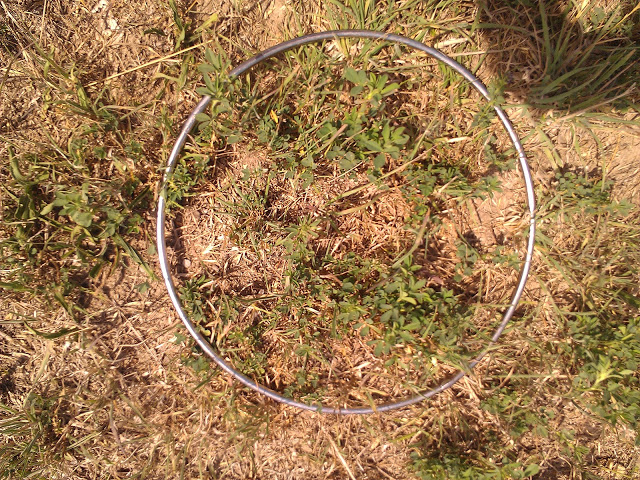The dry matter production from this Bonavaree mixed species paddock has inevitably slowed down due to the dry. Although, the soil moisture has potentially been “topped up” somewhat by the rains that occurred recently in mid-January (2 inches) and then a very well timed 20mm in the first week of February. This has no doubt been well utilised by the various species in this mix. There has been little rain in November through to the beginning of January, although this is what is expected during summer in Marlborough. Fraser admitted that when a relatively wet summer occurs it can bring unique management issues to Bonavaree, where extra stock are usually required to be bought in to harvest the excess growth.
You can see in the photos below that the species in the paddock have reduced in plant size, although plant numbers of all species are still good, and there are no weeds evident in the paddock. The ability for these pastures to survive drought has been displayed this season. The paddock has had a mob of lambs through it before being sent to the works. These lambs killed out at an average of 20.6kg. Lamb growth rates this season are still above the Bonavaree average at 280g/head/day. The long term average is usually 180g/head/day. Although, Fraser reports that they are still about 2 weeks behind last year with regard to the frequency of lamb drafts.
At Bonavaree everything is geared to cope with the dry, the species in this mix (lucerne, plantain and Prairie grass) are all able to survive a drought, and stock numbers are reduced before the inevitable dry occurs. One of the advantages of lucerne in this mix is the potential for dry matter growth when other species have become dormant or shut down, this is due to the extreme efficiency of this plant to utilise soil moisture. The summer droughts in Marlborough can be severe, and this is the primary reason why Doug and Fraser have elected to use lucerne, and lucerne mixes in their farming system. This has been through a sustained process of farm system changes. Both monetary and personal commitment have been invested in this process of change, with all successes and set backs utilised in an extended learning process . Expert advice from Derrick Moot has been well implemented in making the changes required at Bonavaree, and Derrick is still involved from time to time. A fair amount of determination from Doug and Fraser to get it right, and make it work successfully in terms of increased animal production and profitability is further proof that lucerne and lucerne mixes are well suited to a dry east coast environment.
Doug and Fraser seem to relish the dry because they have a system that consistently provides feed insurance for their animals, even in a drought. I can certainly see the attraction of well fed animals and expanses of green good quality feed when you are surrounded by parched arid paddocks.

